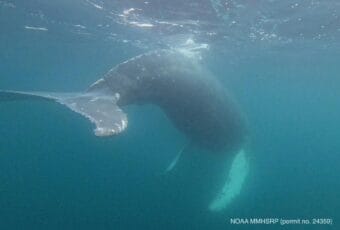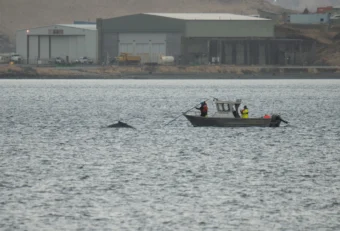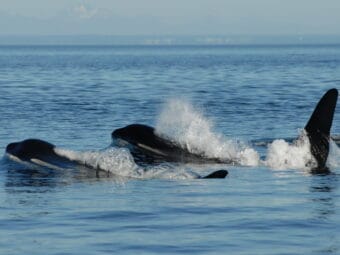
Reports of mule deer in Interior Alaska have been fairly common for half a century, but recently populations in Skagway have increased and sightings have become more common. Reports of groups of up to 10 of the animals in the region have been received by the Alaska Department of Fish and Game, and there is evidence that fawns are being born here.
Large populations of mule deer can be found in the nearby Yukon Territory of Canada. They have likely migrated south to Skagway over mountain passes. Studies in the Yukon have shown that they can harbor a variety of diseases that Fish and Game want to monitor closely.
According to regional wildlife biologist Carl Koch, there isn’t any evidence yet whether the animals that have been spotted in Skagway and Haines are carrying disease.
“We want to learn as much as we can about them. And that’s why the Board of Game made that year-round season so that if a hunter wants to take one they can. They can get the meat, and we can get samples to help try and test for some of those diseases,” Koch said.
That’s because they can be hosts for a wide variety of pests and illnesses. The list is long: winter ticks; brain worms; chronic wasting disease; blue tongue; stomach worm; giant liver fluke; mange and mites.
But it’s the moose winter tick that state biologists are most concerned about. The mule deer can remove the ticks easily. Alaska’s native moose, however, cannot.
“They don’t self groom, they kind of rub to get them off, and they’re losing fur. And they can’t necessarily get them off. If you do some research on what’s going on down in some places in the Lower 48, there’s mortality because of winter tick. And things like calf moose having 1000s of ticks and actually dying from blood loss,” Koch said.
The mule deer is a larger cousin of the indigenous Sitka Black Tail Deer. They are named for their large ears that resemble a mule’s. A buck can weigh in at over 200 pounds. But Koch said it’s their hindquarters that give them away.
“A mule deer is really obvious it has a white rump, most of the tail is white, it looks like the tip has been like it’s black, it’s almost like it was dipped in paint or something. Whereas Black-Tailed Deer, they kind of get their name because they have a darker color tail in contrast to the body,” Koch said.
Hunting regulations on mule deer have changed recently in Alaska, the season is now open year-round. Resident hunters will need to be licensed if over 16 years of age, but no special tag or permit is necessary. A report of harvest, however, is required.
The Department of Fish and Game is actively seeking samples to study.
“We would happily arrange to pay for the shipping and even a container if need be. We don’t know anything about them except that they appear to be becoming established,” Koch said.
Currently, the organization is looking for whole heads with brains intact, hearts and lungs, livers, hides, hoofs, and fecal samples. Fish and Game has more information on its website. The Haines office can be reached at 907-465-4265.



